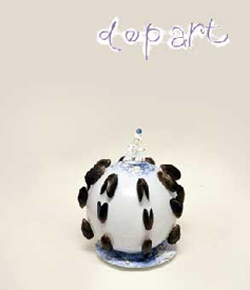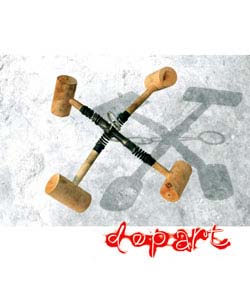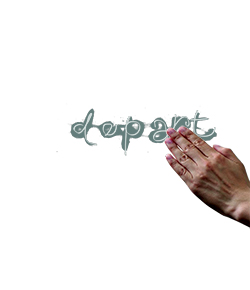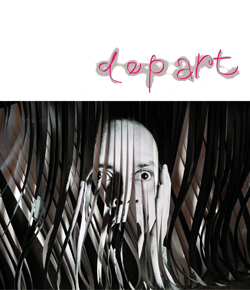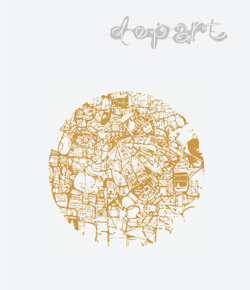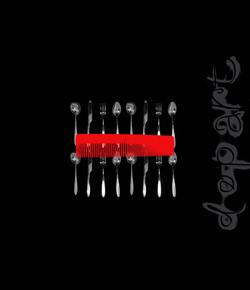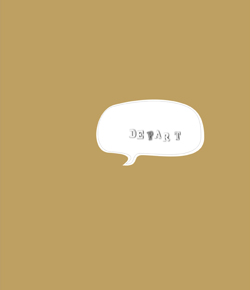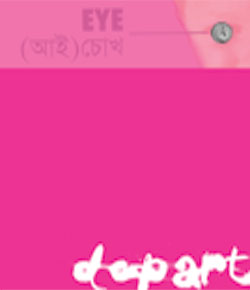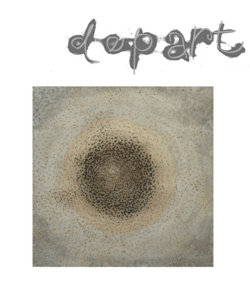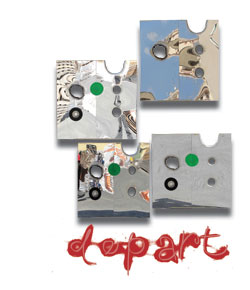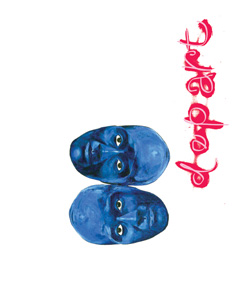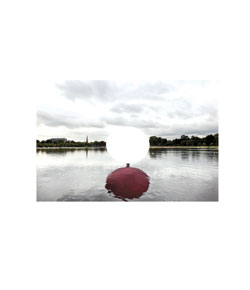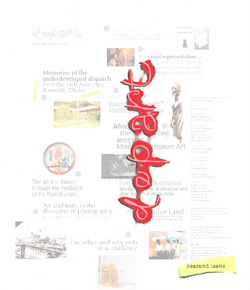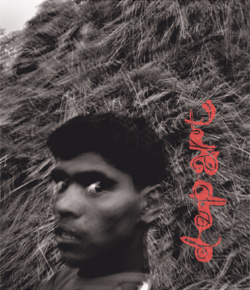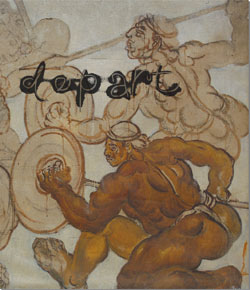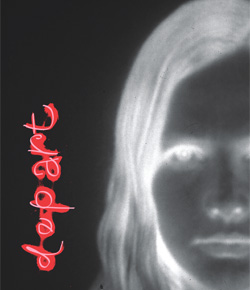Features
Elastic borders of changeful cultural sites
Remapping contemporary art in Bangladesh
1.

A nation is a construction – a site where a sustained geopolitical position usually determines the nationalist narrative, which is often erroneously conceived as a given. The idea of a 'sovereign people' and the 'narrative(s)' governing its politico-cultural pattern(s) are thus tenuously linked with the actual location(s) and its inhabitants.
Any given location is heterotopic in formation as is the geographical site that a group of people considers their mother- or father-land. The concept of a nation perceived as a single geographical location or as a namable land belonging to a homogeneous people responsible for a 'national culture', therefore, is a construction. In actuality, every location is heterotopic where places are made and remade through a multiplicity of acts – be that economic, cultural, or religious – testifying to the presence of an already diversified people. Under the glare of a dominant narrative, the sum total of its 'reality' projected as homogeneous entity, is the creation of imagination – the result of an ontological frame brought into existence to serve an historical necessity. National identity, thus, is often a throwback to an already existing monolith that is premised on the 'the political rationality of the nation' which concurs with the dominant narrative of a nation, as is suggested by Homi Bhaba in his famous tome of essays 'Nation and Narration'.
His tracts re-problematize the notions of national identity based on linguistic, religious and ethnic determinism. India is a glaring example of such a nationalist project – a location where the peoples have always found a multitude of cultural-religious ways to live by and which had never been conceived as one, unified geography before the British colonial rule brought it under a single jurisdiction.
Negation of the nationalist point of view and its attendant identity politics is the natural consequence of the search for the 'othered' narratives, through which any sovereign nation appears as a site that holds in its folds a multiplicity of nations.

A fixed mental map of 'national culture', thus, seems regimental as it strips the validity of all of the other(ed) notions of culture, which is diverse even in its current deposition. In the vast exteriority that is reality, where cultural 'differences' and 'narrative breaches' are often the key to acknowledging the 'other' species of narratives, both the concept of a nation and its culture appear unflinchingly fluid and heterogeneous. This is the very condition through which one must set the prism to view today's artistic terrain in Bangladesh, where a universe of methods and strategies seem to catalyze the younger generations of artists. These are the new breed of artists who emerged in the 1990s and, thereafter, by way of their cotemporaneous positions and practices, they are continuously challenging the established notions of art and, in turn, stretching the cultural boundary.
Any new cultural trait in this clime, one that makes appear a tendency to escape the templates of cultural production that are linked either to an essentialist view of tradition or to the outcome of a wholesale mimicry of modernity, however detached from its location(s), is apparently brewed from within the context of a given geopolitical reality in its condition of flux.


Thus the colonial legacy as well as the historical struggles to consolidate the national identity in the pre-independence era, before Bangladesh came into being in 1971, which is the historic leap that ensured self-governance, alongside the follies and foibles that followed in the post-independent era, shaped the contemporary Bengali psyche. In such a climate most artists remained focused on the two divergent strands – one of Modernism and the other of Tradition, while there were others who chose not to be perturbed by this cultural divide, plod as they did through the grey areas in between with ease. The epistemic frame informed by this seemingly irreconcilable Modern-Traditional divide now seems inadequate as a tool of history in mapping the new art that emerged from a pluralistic terrain where a hybrid notion of 'culture' has long been a mainstay, though its recognition has never been a major concern for both academics and independent scholars. Sree Chaitanya, the exponent of Bengal Vaisnavism, and Fakir Lalon, the eighteenth century philosophically inclined bard, considered by some the most potent minds that had sprung out of Nadia and Kustia, two adjacent regions of undivided Bengal, the former being located in the east of West Bengal and the latter is a western district of Bangladesh, are often passed off as 'rural', 'folk' thinkers. Though, in reality, their ideas flowed from multiple trajectories – ranging from classical Hindu, Shakto, Buddhist, and Sufi knowledge bases.


The word 'hybrid' had always been perceived as anything but derogatory. As for various forms of amalgamation that continued to infiltrate the mainstream Bangladeshi art, one can easily detect its location-specific strain in the works of Zainul Abedin, Quamrul Hassan and S.M. Sultan, the 'indigenous modernists’2 who got their start variously in the 1940s and 1950s. Their stratagems, which easily cut across East and West, urban and rural, had also kept seeping into the idioms of the politically motivated generation of the 1980s. The artists of Shomoy group and other exponents of figurative art expanded on the theme of political antagonism. One is able to read into Quamrul's works the social-political chaos of the early 1980s, which catalyzed a portion of the new generation of artists to eke out a language where social-political concern and aesthetic purpose were brought into proximity.
The self-reflexive and purposefully marginal groups, made visible in the art of the new breed that emerged 1990s onward, had imbibed the social-political antagonism of the past only to articulate and negotiate 'reality' in the light of a new awareness about multiform, multimedia, etc. Initially unresponsive to their new enthusiasm for new stratagems employed to fluidly traverse a wide spectrum of interest and technique, the mainstream institutions slowly gave way to accommodate both the authentic and the forged. As institutionalized loci of transference of academic wisdom based in Dhaka, these were sites that could no longer afford to look the other way, while the raging culture of divergent practices based on an understanding of the hybrid social spaces and the global surge for interdisciplinarity began to generate works of merit. Though, one may conclude that such a process of accommodation enforced by circumstances precludes any theoretical or academic learning is needed to sift through the produce of the new breeds. While today's artists are boldly taking on the challenges of tackling new media and other forms of praxis including performance art, there is a dearth of efforts to draw on knowledge that is integral to such art forms.
In absence of a learning environment attentive to the new development in the mainstream institutions, Bangladesh's visual vanguard chose to be responsive to both local and global reality armed with whatever technical and critical knowledge they came across on the wide horizon of the international art scene. Artists like Mahbubur Rahman, Taeyba Begum Lipi, and Ronni Ahmmed consciously interfered by cutting a fissure in the mainstream cultural terrain. They chose to make their appearance in an 'othered space' by sidestepping the mainstream concern for formal rigour and the urgency shown by the generation of the 80s to remain socially engaged by coding the canvases with obvious references to autocracy, or to the quislings of the liberation war. To render defunct stale aesthetic solutions, these artists began to reinvent story-telling as a tool to navigate both personal and collective psyche and psychosis. It is by surfing across the multi-planed terrain of artistic practice that one may arrive at flashpoints which the art of the region has so far witnessed giving rise to moments of successive radicalization. If Mahbub had accomplished it by way of performing the dissolution of the sculpture-painting divide and calling forth a body-oriented language to bring to the fore the conditions of the being in the atrophied social reality, Ronni has accomplished it through testing the cognitive limits while travelling far beyond the 'facts of consciousness'.
2.

Modern art in the pre- and post-Partition Bengal has always been defined in relation to Naturalism introduced to the subcontinent by the British ruling elite. The Naturalist representational techne, which often lends an artwork the quality of empathy and is referred to as plain 'Realism' in Bangladesh, has served an array of aesthetic purposes in the postcolonial context. Zainul Abedin used it as a point of departure from the ultra-traditionalist movement of the Bengal School3 which, among other tangential repercussions, had given rise to the Orientalist moment in the early twentieth-century undivided Bengal. SM Sultan deployed it as a façade in his socio-romantic vision where an imaginary, undefined, muscle-bound, ethnic population ekes out a living in communion with nature, while simultaneously carrying out a sustained revolt against the gentry (who remain unrepresented).
If the Bangladeshi pioneers, who emerged in the 1940s and 1950s, thrived on the Naturalist tendencies introduced through the British colonial institutions, among which the Government Art College had been the most fertile seedbed, the second generation of artists kept an 'open eye' for what was 'new' and were rather quick to internalize the formal rigour of the European avant-garde–especially the geometrical abstraction that emerged via Cubism.
If through academic learning, the idea of specificity and uniqueness of a culture has been given basis then, through the hierarchical binary of Eastern-Western, within and outside of the academy, the misperception that perpetuated is that the 'local' is immutable. Interestingly, as a throwback to the colonial-era schooling, Realism is often being accepted as a projection of the local disposition, alongside the traditional rural/folk crafts and methods of painting. Today, amongst those who consider art as a vehicle of representation and those who look at tradition as a reservoir to be explored to ensure connectedness with the indigenous ethos, there appears a virtual affinity. Zainul himself had set the example for this type of alignment through the indigenization of Realism, which he, at one point in his life, deliberately inflected with 'folksy' motifs and forms. However, if a fruitful blend of modern and folk forms is to be sought out in a contemporary art context, Quamrul Hassan's attempt at melding the Cubist stratagem with the linearity of the rural shora4 painting clearly suggests an artistic leap across time. Hassan's hybrid art form, especially those artworks that employ the linear method of shora painting at the service of the fragmentary motifs of Cubism, is a significant addition to the semantic field of innovation.
3.

It is this cultural premise based on the East-West pairing against which a series of symbolic association is set: local-international, rural-urban, traditional-modern, etc. Through these binaries, modern art has found its first footing in Bangladesh. Interestingly, both what is 'local' and 'international' have kept fuelling the pioneers of modernism, sometimes even a single artist would appeal to both senses through his or her artistic ideas, as is seen in the works of Quamrul Hassan, a Modernist who emerged in the 1950s, and the works of Novera Ahmed, a sculptor of the 1960s. Both artists were enthusiastic about what they perceived as 'local' by self-consciously setting the stage for a union of the two worlds with one representing the 'local' and the other the 'international'. Their union can be defined as a superimposition of 'chosen' features of the local arts onto the body of their individual artwork, developed through the formal experimentation of modernist aspiration. Their works gave rise to a location-specific variant of the genre, which, by then, came to be known as indigenous or vernacular modernism.

The post-independent regime unfurled a new chapter in the shifting cultural life of the new people who unabashedly called themselves Bangladeshi Bengalis. The country, after the victory in 16 December 1971, became a seedbed of nationalist fervour and modernist idioms, which had once served as a catalyst for contemporary practices in the undivided Bengal (before the 1947 Partition). These remained the touchstone for advancing the national aesthetic cause. In the post-panoptical era, which is defined by self-rule in the absence of the colonial 'master', the changes in the national polity opened up a number of avenues to be explored by the artists, enabling them to inscribe an already interesting art scene with diverse artistic dictions.
On one level, the realistic strain of representation gradually gave way to various other parallels such as simulation, simulacrum, and, more pervasively, the caustic commentary-laden social realism. On another, abstraction and other forms of transcendent notions had set some of the artists on a course to revitalize the lexicon of symbolism, while they kept excavating either the collective narratives or the symbolic gestures, which have historical-social value, or even by tapping into the individual biography. Both the collective and the personal are present in the works of Kalidas Karmakar who emerged in the 1970s and went on to develop a language that often morphed into cryptic symbolism in the early 1980s. He expanded on the project of Quamrul by extending the field to a greater 'Eastern' concept of art and, like Quamrul, he too has been inclined to employ linearity with the intention to inflect his imagery with a local flavour.
4.
The East-West dichotomy, which had surfaced in the colonial period when Kolkata was the cultural centre, continues to affect the narratives of the present. It is an incontrovertible fact that at an earlier stage of our history, artists set the stage for modernity in the then undivided Bengal through internalization of the dominant Western modes. What is worrisome at present is that, unlike the artists of the earlier generations, some have developed a habit of 'pick and choose', taking to artistic movements, or pooling fragments from the wide horizon of the contemporary art, like 'new age' shoppers in a mall.
On the other hand, what is laudable is the decidedly lighter projection of a serious intent, grounded in the production of both one's own 'being' (in the metaphysical sense) and art, which is a physical object bearing the signs of the psychic terrain(s). All this is presented as a counter-narrative with, perhaps, the hope of effectuating a 'gaze shift' and recasting their position against the dominant form of image production from within the current matrix of the 'spectacle society', thereby redefining the scenographic models through which one is to map the artistic viability of the newly arrived forms.
While traditional practices continue enjoying support from institutions and traditional connoisseurs, new stratagems too are infiltrating the mainstream. To script the new is to arrive early and with the foreknowledge that there will not be a ready audience for such an art. To keep track of early arrivals, one needs to set aside the East-West dichotomy, a faulty frame, which continues to affect our cultural fabric. Whereas, the vigilance against the Western 'cultural aggression' could never be averted, as the reclaiming of Bengalihood has not yet translated into an actual rethinking of modernity in the light of the wholesale appropriation of it in this region at an earlier stage.


The differentiated practices may often seem inadequate in the context of a society in flux and also affected by the violence that continues to scar some of the locales across the globe. However, the consensus image/art is the one that the cultural industry often deems important, for they clearly avoid the most pertinent issues of our time – complexity. So, what may be dubbed as 'new' often appears by seeking to generate 'the other' and the 'profane' amidst the 'sacred'. Artists set to make a fresh beginning to achieve their goals by taking detours, as became evident in the late 1990s Dhaka – a moment in history when the encounters with the global surge for the 'new media' still had not permeated the young minds. In fact, the 1990s was a time when there occurred a convergence of faiths on modernism, postmodernism and even ideas whose antecedent remained undetermined; a self-conscious minority who identified with the new germination simply chose to depart from the linear expressivity of modernist incline. Both in terms of ideological position and in their search for new visual dictions, the singularity of focus and form was convincingly displaced. Some artists who had appeared in the 1980s equipped with political polemics also began to acknowledge the drift towards what we may now recognize as a relatively more fluid praxis – where the sculptural-visual, narrative-symbolic or even the polemical-poetical borders began to disappear, making way for interactivity and intertextuality.

In the search for the seed of the new in Bangladesh, the tendency to overcome the established limits of art may be identified as an important catalyst. The art of the 1990s, with its experimentations with medium, content and process, derived huge sustenance from the national- and international-level exhibitions organized by the Shilpakala Academy, the national institute for promotion of art and culture. The Asian Biennale at Dhaka that customarily showcases a wide range of international art also may be taken as a crucial form of inspiration and transgression.
To facilitate a glimpse into the engine that motors the new art, one must zero in on the new attitude towards art and society. In acknowledgement of a world in flux, artists either began to grapple with or dexterously handle ways of forsaking the traditional modern stratagems to lean towards newer forms of practice. If, on the one hand, the global new media and performance art have driven them to extremes, then the search for the idioms to address the changing social climate has determined the paths taken by some, on the other.
One could also find missteps – ones that led to mimicry and other forms of false starts. Through objets d'art many framed art where the signifier was too uncomfortably close to the signified, missing the conceptual loci altogether; while others chose to regurgitate elements that are part of established languages in the west. Luckily, some preferred to delve into the abyss of meaning and signification with the hope of generating counter-narratives to negate both simplified narrative gestures and monolithic modes of expression. Mahbubur Rehman, Ronni Ahmmed, Tayeba Begum Lipi, and Rafiqul Shuvo stand out, among others, for having unseated themselves from linearity of expression to opt for more or less multilayered stratagems and schemes. The striated commentary on the social-global condition that Mahbub inaugurated using a new strain of story-telling centred on the medicalized body can be considered as an act of antagonism, as it initiated a lifting of the veil on the volatile political reality of the current world order.


Mahbubur Rahman, who appeared in the scene as early as in the 1990s, expanded on the political art of the 1980s, especially those idioms that forwarded a critique of the then autocratic regime. The dramatization of a 'lived moment' was of crucial import to him at that stage. This is an element that bled into his domain from the politically inclined members of Shomoy, a group which gave a start to Bangladesh artists such as Shishir Bhattacharjee, Dhali Al Mamoon, Dilara Begum Jolly and Nisar Hossain. Mahbubur's vital addition, however, has been representation of the human subject or body, shown under different conditions in the given time and space, as a performative transmitter of a decidedly grim aspect of reality. His protagonists come, as they do from both ends of the rulers and the ruled, to tell harrowing tales of lived experiences. As a depicter of the medicalized body in the contemporary social context, Mahbubur introduced a narrative into his composite form of sculptural presentations, an innovation that rescues this mode of expression from an otherwise static sculptural matrix.



The body remained an important point of reference for artists who were set out to depart from the convention in the works of earlier painter heroes. Body has been read and interpreted in relation to a phenomenology of action upon which the signs of the violent past transgressed in the work of Dhali Al Mamoon, an artist who was bound to easel painting throughout the 1980s but gradually opened up to many influences to explore his own narration of the national crises and past traumas. It was Dhali who first resorted to multimedia articulation in the late 1990s, fuelling the enthusiasm of many young exponents of Dhaka avant-gardes, who were already set on the path of new avenues of expression. Additionally, the late 1990s saw Nisar Hossain, who still holds on to a language of expression that portends violent insurgence of faith-based politics, devise techniques which were sometimes conventional and, at times, radically performative to arrive at his radical language of expression.
Though the political antagonism of the 1980s kept feeding some of the young minds who attempted to deviate from the convention in the 1990s, there were distinct aesthetic markers through which one could identify the newness that appeared for the first time. The most important element was 'playfulness' in melding mediums and in telling stories. And this aesthetic preoccupation of the late 1990s flows fundamentally in two directions. On the one hand, there was a surge in self-representation and in the politics of identity, a throwback to the art from the 1970s and 1980s; on the other, there was a replacement of the idea of 'where you are at' with 'what you can become' which was geared towards a divagation utilizing a neo-absurdist, non-sequitur logic, as is obvious in the work of Ronni Ahmmed, whose hyperbolic expression traverses an entire gamut of sensibilities.
Ronni devises thoughtful, metaphorical story-telling imagery to critique the condition arising out of the new capital-driven social reality that has been made to stretch across the globe. His metaphysically invested paintings are simply food for imagination where the visual rigour meets the linguistic punning (expressed in his titles) to push the limits of the cognitive realm of the viewer. Especially in a hundred-foot-long painting entitled 'Archaeology of Noah's Ark', one senses the presence of a strange brew that challenges our taste buds; this is the imagined horizon where mythology, nursery rhymes, and local lore are overlapped with the spirit freewheeling nomad on a fantastic trip to arrive at a dramatic tableau. In fact, tableaux are what he attempts in most of his imagery where the narrated, iconoclast world meets with a deconstructive mode of expressivity.
On the heels of Ronni Ahmmed, Rafiqul Shuvo followed suit, as did some other artists who made their appearance at the beginning of the new millennium. Aside from Ronni and Shuvo, it was amongst the budding artists who have just begun to experiment with objects and its possibilities latent in decontextualization that we are able to locate multiform, multi-dimensional and even a multiplicity of polemical referencing. Shuvo has proven to be the most prolific video artist who, through his tongue-in-cheek freights, playfully toggles between schizophrenia and transcendence – the two opposing categories, one linked to mental agony and the other to philosophy which still exerts influence on art.
To negate the empirical in order to arrive at the discursive, the new proponents of art, at present, seem to take their cue from all kinds of tableaux – social, psychographic, and psychological. Through metaphorical simulation, artists such as Promotesh Das Pulak, Imran Hossain Piplu, Marzia Islam, Abir Shome, Swarnali Mitra Rini, Md Shakhawat Hossain et al, keep pushing the parameters of art, setting conventions that hold the potential to replace the old ones.
Tayeba Begum Lipi, on the other hand, sticks to a kind of 'matter-of-factness' which makes her effort look more like 'object transmuted into concept', as is evident in the pieces she has recently made out of custom-made razor blades. These pieces combine the real with the metaphorical, and it follows a history of similar methodology efficaciously applied since the late 1990s. Her forte primarily lies in formulating ideas to voice a set of feminist concerns. Patriarchy thus is opposed in myriad ways to elucidate women's place in a changing society, though she denies the viewer a more straightforward narrative by choosing to deemphasize the telos, or the purpose, by emphasizing the material and its chimerical constitution.
In opposition to such a strategy where the spectacular as an element is embedded in the material providing the basis for the aesthetic experience, Ronni Ahmmed, who started out in the new millennium, has been inclined towards a psychosocial remaking of all existing fables and metanarratives. He sets the standard for an art that sees the amalgamation between simulation and the allegoric generation of pseudo-epic or narratives, and the physical presence of the material is never given place in his clime.
As the new languages seek validation from the mainstream institutions, there are artists who have crossed over to the new territory in the last five years. Even though they may not be directly linked to the new surge for interdisciplinarity, there are a number of artists whose recent expedition into the region of postmodern fluidity can easily be defined as the departing point from the field of mainstream Modernism. These are proponents who often conflate the fictitious with the empirical. If absurdity and hyperrealism informs Anisuzzaman Sohel's digital prints and sculptural concoctions, in Mohammed Wahiduzzaman we find a cross-cultural effusion as he meticulously superimposes popular art with references to political icons of the modern age. Manjur Ahmed's work also engages with the converging media and narratives to formulate a critical voice. His recent works apply a Pop Art-like sensibility to divulge truth about how we, the so-called 'conscious beings', wreak havoc on our environments – social and natural.


Artists such as Atiqul Islam and Nasima Haque Mitu, with their sculptural innovations, simply reside in between the Modernist tendency, which taught them to express an idea through a single form, and the new stratagem that employs a tie with multiple spatial realities. Through both an obvious method of referencing and also co-opting forms that recall cultural heritage of the rural Bengal, both Atiqul and Nasima have cleared a site that at once houses nuanced identity politics and innovative unfurling of their respective sensibility using multifarious methods. Perhaps Lala Rukh Selim, another artist from the 1980s, in her recent works, aptly demonstrates the possibilities latent in such a convergence of contemporary and tradition.
Unlike the rest, Abdus Salam's conceptually fraught works lend their strength to a particular moment in history and examine its placement in a specific spatial reality. He excavates memories related to events and historical mishaps, and translates the very spot of such historical occurrences into prints, which he presents in sprawling installations.
In the new millennium, a number of experimental artists have emerged from the port city of Chittagong; among them there appear tendencies to lean towards a Bangladeshi pop image-laden art, which is often employed to construct social commentaries and to address the social-environmental issues at hand. While the difference between the painterly and the sculptural remains blurred in works of Sharod Das, the artist Ripon Saha comfortably spins easel paintings where sourced images intermingle to negate, or to poke fun at Modernism's much vaunted achievements that have accrued little benefit for countries that lie at the periphery.
Amongst the emerging talents, some are exploring fresh new territory to sharpen their critical voice and from Chittagong we have Abu Naser Robii, Palash Bhattacharjee et al, whose performances have set a new standard where too many inchoate ideas jostle to attract attention. What merits a mention here is that it was Mahbubur who introduced contemporary performance in Bangladesh and his intermittent hiatuses in Chittagong had initially sparked the interest of many a new enthusiast.
Conclusion
In the discussion of the new art, what is of crucial import is the birth of a multiplicity of new positions that were cast vis-à-vis art following the conscious or unconscious negation of the duality of abstraction and figuration – one that had come to prominence in the 1960s leading to the bifurcation of the art scene in abstract and figurative schools in the following eras. Some artists were also able to produce a postcolonial language that did not have to take for granted the dichotomy of Western-Eastern, or global-local – one that forms an essential part of the nationalist narrative. Among the new generation of artists, while some drew clear lines of exit from the indigenized avant-garde, a few kept foraging on the old notions while co-opting the new media and methods leading to mishmash that often seem to defeat their purpose. As for those artists who are fluently bringing into view new forms and languages, perhaps the word 'experimental' adequately captures the spirit with which they have produced works of substantial maturity in the last two decades. What remains to be seen is whether what has arrived through all kinds of hybrid processes will remain aesthetically relevant in the years to come. Perhaps, this is where the question of identity can again be recalled, though not to fix a locus of geo-cultural implication but to freight the message that the art of a particular locale is always engaged in its socio-political development through the ages. Though the voices of iteration are as varied as are the artistic projects, in the end the heterogeneity of expression still holds the potential to tell the tale of having lived a shared historical reality.
Notes
- Heterotopic stands for multispatiality in this article, though Michel Foucault coined the word heterotopia to describe places and spaces of otherness, which are neither here nor there, that are simultaneously physical and mental, such as the space of a phone call or the moment when you see yourself in the mirror, as explained in Wikipedia.
- Indigenous Modernism is a category coined by Borhanuddin Khan Jahangir, a preeminent critic and writer based in Dhaka, Bangladesh, and was first used to describe S M Sultan's deployment of the European Renaissance anthropocentric representational technique to unveil an indigenous narrative imagery. The word captures the spirit with which the local artists began to employ the knowledge and techniques of western origin to advance their respective aesthetic purpose.
- The Bengal School of Art, commonly known as Bengal School, was an early twentieth century revivalist art movement that originated in Kolkata and became a guiding spirit at Shantiniketan. It was associated with Indian nationalism (swadeshi movement) and led by Abanindranath Tagore (1871-1951), but was also promoted and supported by British arts administrators like E B Havell, the principal of the Government College of Art, Kolkata from 1896. Eventually it led to the development of a strand of the modern Indian painting with a strong stylistic adherence to the Mughal miniature and the revivalist ethos of the educated Hindu bhodrolok/babu or dandy.
- Shora paintings take for their surface the earthen lid-like disks which are used to furnish the otherwise humble household alter during certain rural pujas or rituals. A product of faith where gods and goddesses are depicted in a simple, yet formal manner, serving the purpose of the Hindu communities of lower social and religious rungs in rural Bangladesh and West Bengal. It is a living tradition.




